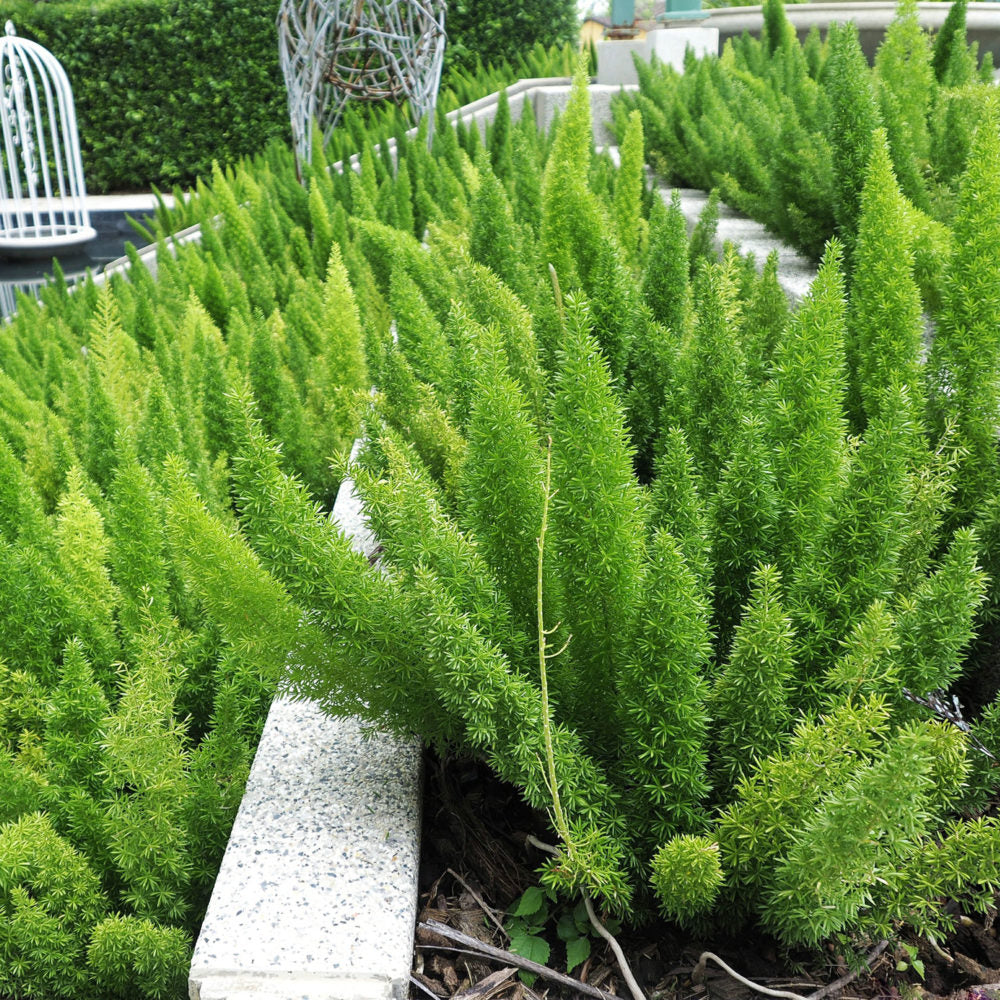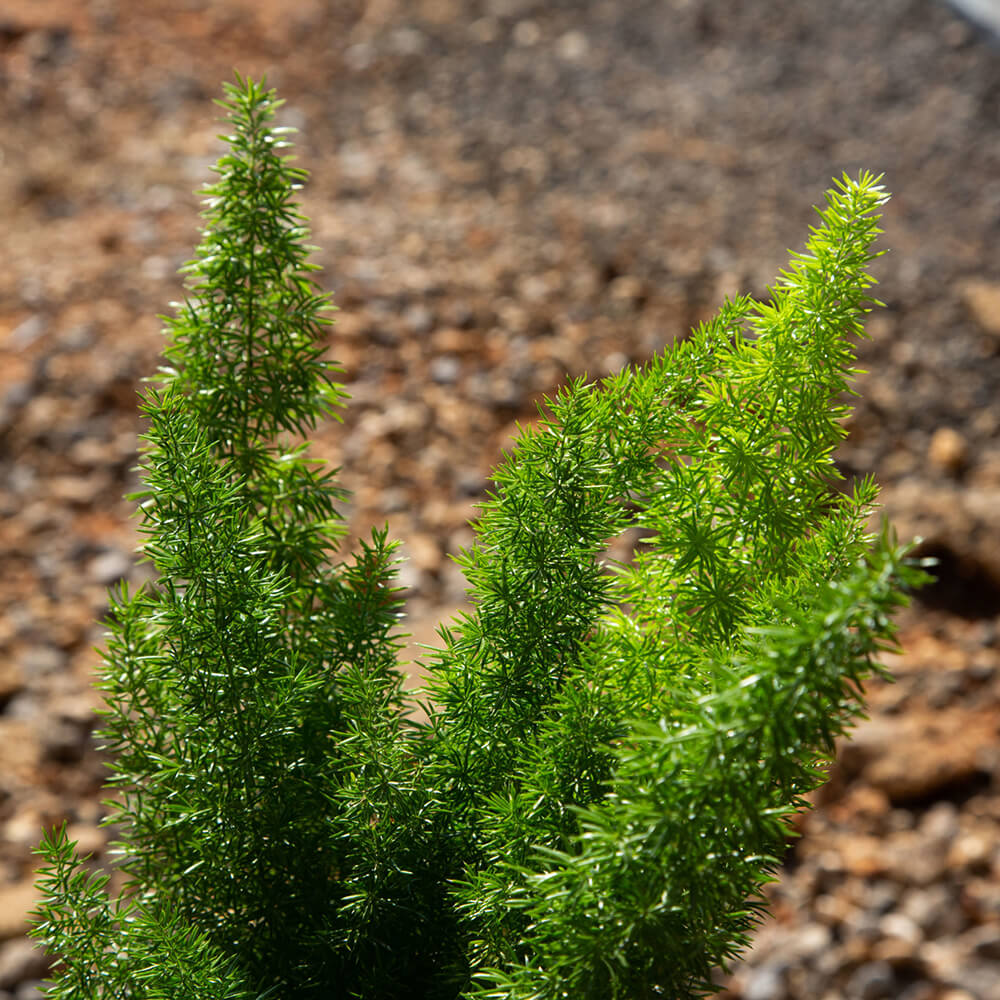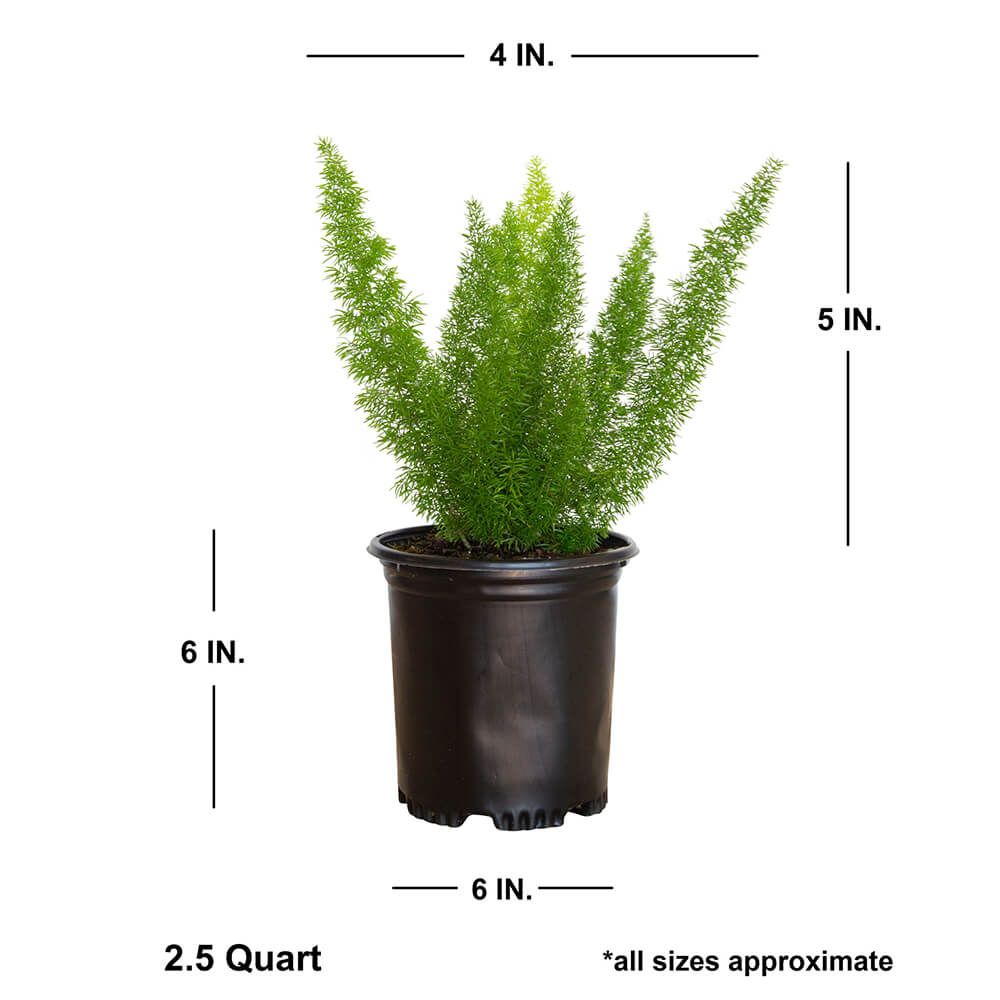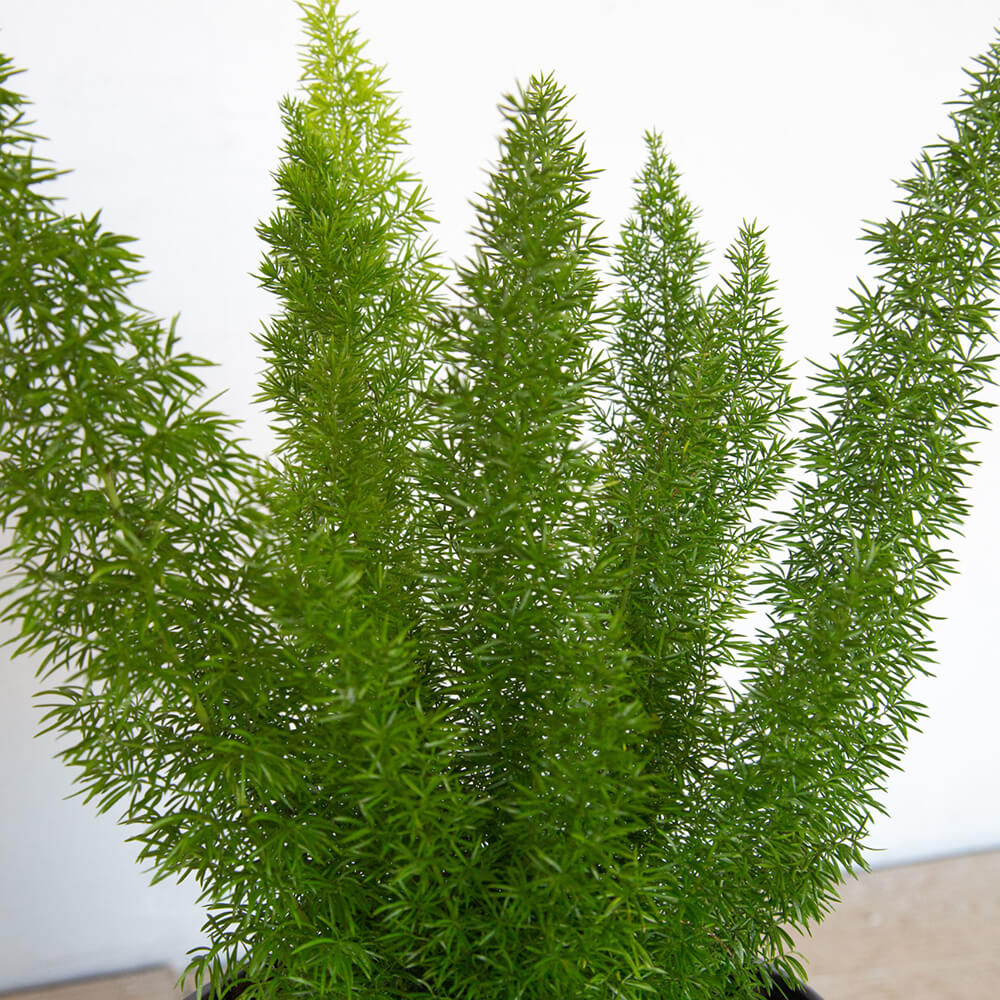Foxtail Fern
Foxtail Fern - 2.5 Quart is backordered and will ship as soon as it is back in stock.
Couldn't load pickup availability
Description
Description
Foxtail ferns (Asparagus densiflorus), also known as asparagus ferns, are evergreen perennials that feature vertical plumes and weeping foliage. They have a clumping habit that reaches 2-3 feet high by 3 feet wide. With its unique appearance and ability to be planted indoors and outdoors, this plant has become a favorite in the gardening community.
Although this plant often has "fern" in its name, you will be surprised to learn that it is not a fern. Asparagus Fern will propagate from seeds and does not produce spores like typical ferns. However, gardeners commonly associate it with ferns because of its clumping habit and soft, green foliage. The asparagus fern is a member of the lily family and is related to the asparagus vegetable. This plant is not edible asparagus and should not be consumed by humans or pets.
This plant is adorned with tiny white flowers in the spring, and soon after, red berries follow behind them. Of course, there is no guarantee that the flowers or red berries will appear yearly. Be careful, the red berries are toxic to humans if consumed, but birds are attracted to them and will eat them, bringing life and movement into your garden for years to come.
Asparagus Fern is a shade lover thriving in dappled sunlight, full shade, but never full sunlight during the hottest parts of the day. Overexposure to high temperatures and direct sunlight will lead to yellowed foliage and potentially the death of the plant. This Fern grows best in part shade, allowing the perennial plants to grow lush habits and emerald green foliage. However, they can also be grown in part sun, resulting in the growth of lighter green but healthy foliage. A fully mature plant averages 2-3 feet in height and 3 feet in width.
Foxtail Fern Care
Do foxtail ferns like sun or shade?
Despite looking like a tropical plant and having hardiness zones in subtropical regions, these ferns is more of a shade lover. Plant your new fern in locations that receive filtered, partial shade in east-facing gardens or windows. Morning sun is no problem, but avoid bright, hot afternoon sun, which will damage the plant. These ferns can also tolerate full shade, but it may cause the leaves to emerge in lighter shades of green.
Are Foxtail Ferns Cold Hardy?
Foxtail Fern is tolerant to temperatures as low as 15°C and thrives in USDA Zones 9-11. If you live outside USDA Zone 9, you can use them indoors as a houseplant or plant it outdoors in a container that can be brought indoors and overwintered.
Place your potted plants indoors in a container or hanging baskets near a bright sunny windowsill. Keep your soil moderately moist to prevent your foxtail fern turning yellow, but don't drench your plant, or you'll get root rot.
Watering Ferns
The Foxtail plant enjoys moist, well-draining potting soil that is rich in nutrients. Water weekly during the spring and summer and allow the top layer of soil to dry out between watering to prevent root rot. Foxtail Ferns' tuberous roots store water, and too much water may not be absorbed quickly by the ornamental plant. In the winter, reduce watering to once every two weeks.
When to Prune Foxtail Ferns
Whether used as an indoor plant, in hanging baskets, or in the garden, the foxtail fern's weeping habit requires only maintenance pruning. However, mature plants can become thin and leave behind bare stems. You can remove these bare stems by snipping them where the foliage stops on the plume.
These ferns can be divided each year and repotted in the spring. Start by removing the plant from its pot. Cut from the top of the rootball through the thick roots to the base of the rootball. Use a sharp knife to avoid tearing the roots. Repot the plants and water them as necessary.
Fertilizing Ferns
Throughout the growing season, spring to fall, you can fertilize this ornamental plant if you find that it needs it. Add houseplant or tropical plant food to wet soil once a month. Avoid adding plant food to dry soil, which may lead to root damage. Organic compost is another excellent way to boost your fern.
Where to Use Foxtail Ferns
Your USDA Zone will dictate whether or not to plant indoors or to find a permanent spot for it in your landscape. Since Foxtail Fern thrives in USDA Zones 9-11, gardeners in this area can plant it in shade gardens, and use it on the patio, or as an indoor plant.
For those in USDA Zones 8 or lower, we recommend planting in hanging baskets or containers that can be moved inside your home easily. The fragrant tiny white flowers and dense foliage plumes will provide visual interest for any setting. Be sure to place them by a bright window that will allow the indoor plant to thrive.
Care & Use
Care & Use
Spacing Recommendations
Spacing Recommendations
-
Scientific Name
-
Hardiness Zone9, 10, 11
-
Sun ExposureShade to Part Shade
-
Evergreen or DeciduousEvergreen
-
FeaturesAttracts Birds / Butterflies, Shade Tolerant
-
Feature ColorGreen
-
UsesHouseplant, Accent, Border, Container, Groundcover, Mass Planting, Woodland Garden
-
Water NeedsMedium
-
Bloom SeasonNone
Growing Zones : 9, 10, and 11







